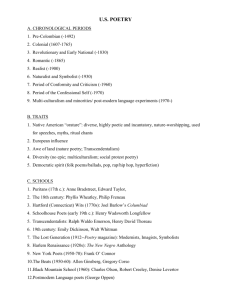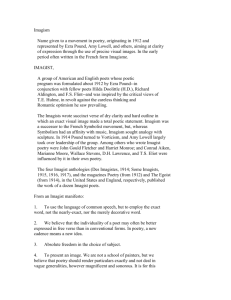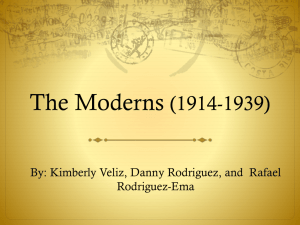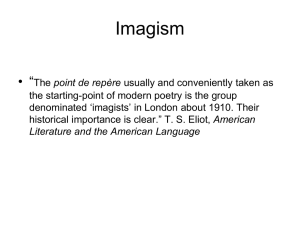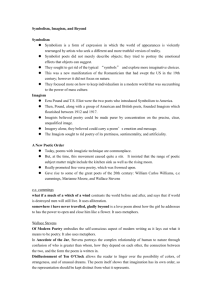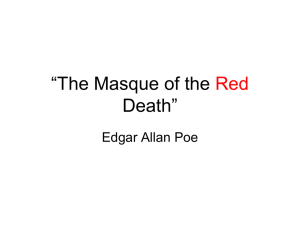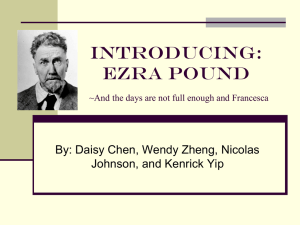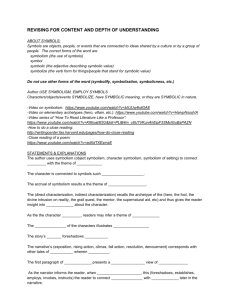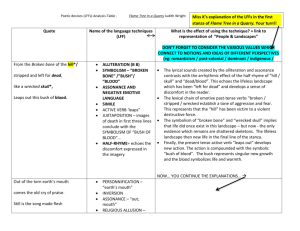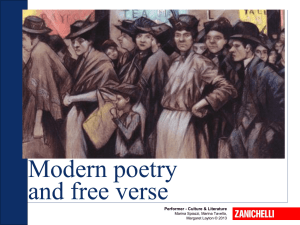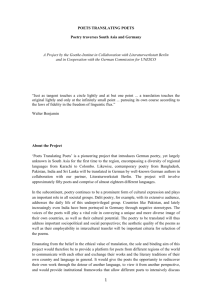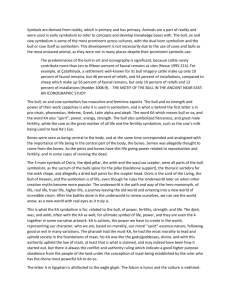Symbolism, Imagism, and Beyond
advertisement
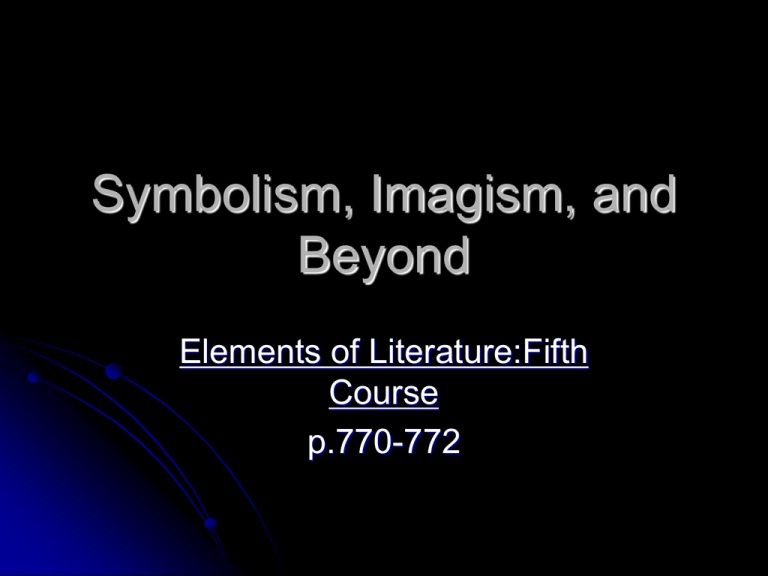
Symbolism, Imagism, and Beyond Elements of Literature:Fifth Course p.770-772 Symbolism Symbolism is a form of expression in which the world of appearances is violently rearranged by artists who seek a different and more truthful version of reality. Symbolist poets did not merely describe objects; they tried to portray the emotional effects that objects can suggest. They sought to get rid of the typical “symbols” and explore more imaginative choices. Symbolism cont’d. This was a new manifestation of the Romanticism that had swept the US in the 19th century; however it did not focus on nature. They focused more on how to keep individualism in amodern world that was succumbing to the power of mass culture. Imagism Ezra Pound and T.S. Eliot were the two poets who introduced Symbolism to America. Then, Pound, along with a group of American and British poets founded Imagism which flourished between 19121917. Imagism cont’d. Imagists believed poetry could be made purer by concentration on the precise, clear, unqualified image. Imagery alone, they believed could carry a poem’s emotion and message. The Imagists sought to rid poetry of its prettiness, sentimentality, and artificiality. In a Station of the Metro Ezra Pound The apparition of these faces in the crowd; Petals on a wet, black bough. A New Poetic Order Today, poems with imagistic technique are commonplace. But, at the time, this movement caused quite a stir. It insisted that the range of poetic subject matter might include the kitchen sink as well as the rising moon. Really promoted free verse poetry, which was frowned upon. Gave rise to some of the great poets of the 20th century: William Carlos Williams, e.e cummings, Marianne Moore, and Wallace Stevens
